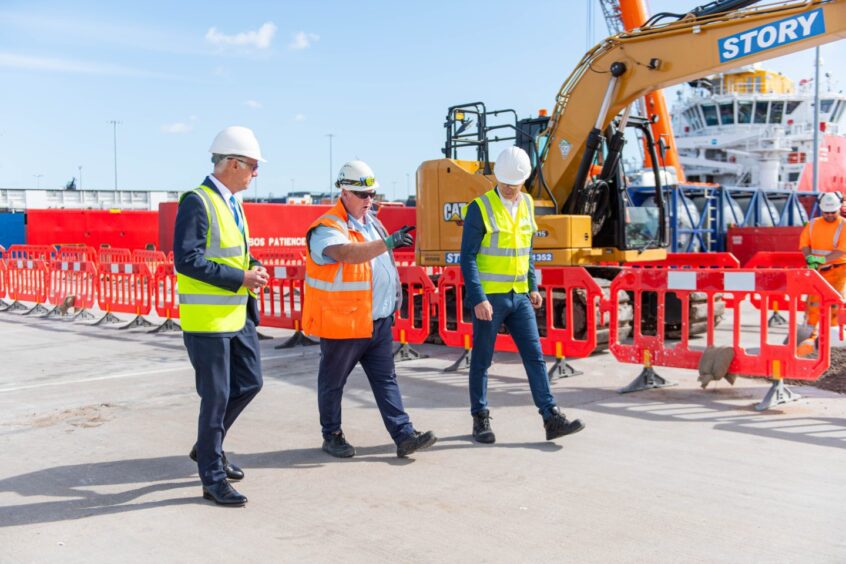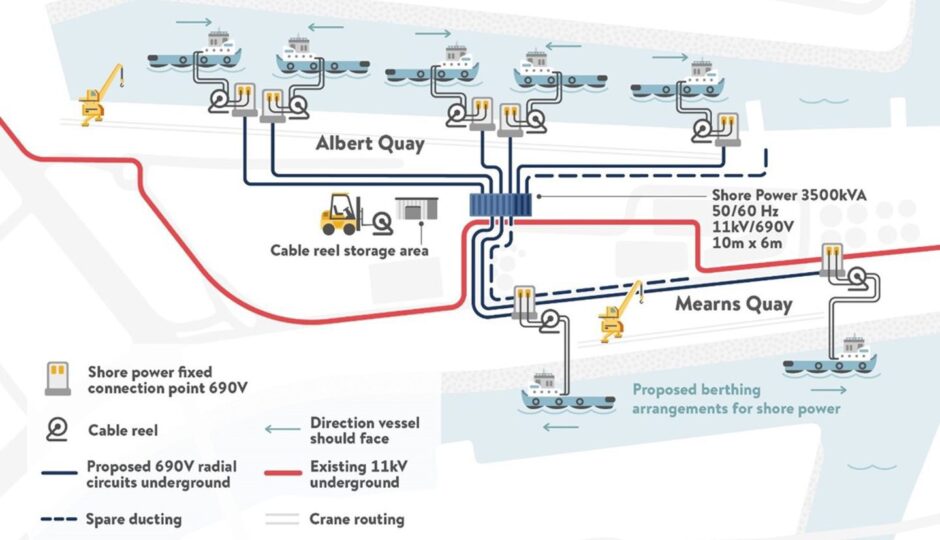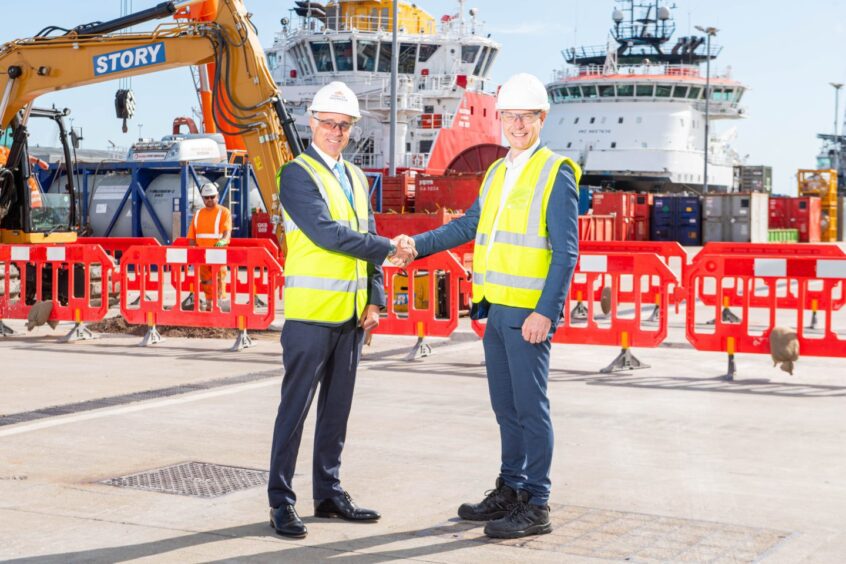
Port of Aberdeen has started work to enable vessels to plug into the grid for power instead of burning heavily-polluting marine fuel when they are berthed.
The shore power project will supply electricity to ships from seven berths in the port’s north harbour in the city centre which is expected to reduce harmful emissions by as much as 80%.
When complete, the demonstrator project will be Scotland’s largest commercial electric shore power system.
The “Shore Power in Operation” scheme is a first step in the Port of Aberdeen’s plan to become the UK’s first net zero harbour by 2040.
Similar technology has been used by airports to power planes on the ground when they have landed. However the power load of the large-sea going vessels is much larger in comparison.
The project has been funded in part through the Department for Transport (DFT) Zero Emission and Infrastructure (ZEVI) competition. It is part of wider efforts to decarbonise the shipping sector which is estimated to contribute around 3% of global emissions of green house gases, according to Unctad.
Changing the sort of fuels vessels use one way of decarbonising shipping, but shore power is seen as a useful stepping stone. And while not all vessels are currently electrified, increasingly this is the case.
The system is being developed by Danish shore power specialist, PowerCon.
Peter Selway, shore power specialist at PowerCon said the system’s power would produce the equivalent of 4MW of power. “Or to put it another way, 800,000 5w lightbubs.”
“The point of plugging into shore power is it stops all emissions locally, any CO2, nitrogen oxides (NOx), sulphur oxides (SOx), noise, vibration,” he said.
One of the main challenges to adoption of the technology is cost – burning marine gas oil (MGO) currently costs less than drawing electricity from the grid. Although this could change as the technology becomes more widely adopted and governments could also change the way marine fuel is taxed.
Offering such facilities will be necessary for all ports in the European Union (EU) by 2030. However this won’t be the case in the UK. The largest such scheme in the UK is in Southampton. The first in Scotland was a small system at Stromness, Orkney while Montrose Port Authority has invested £1m in a similar scheme there.
Selway added: “It is great to see a place like Aberdeen really taking the bull by the horns,” he added.
Port CEO Bob Sanguinetti: “This £4m project is match funded by the UK government, we are very lucky to get that funding.
“This is a perfect example of where the private sector and the public sector can come together to deliver something as significant as this.
“We are on a journey towards net zero – helping decarbonise the shipping sector and as a port we have a key role to play there in terms of providing infrastructure.
“But this doesn’t come cheap. This is expensive. This is breaking new ground. This is driving forward new technology.
“We cannot do it on our own. We rely on strong leadership from government and funding but also legislation as well to make sure there is a level playing field.”
Vessels will be able to plug in to grid-powered electricity under the port’s renewable energy tariff while berthed at Albert Quay and Means Quay in the port’s north harbour.
The system will allow vessels to shut off their main and auxiliary engines while at berth and reduce their carbon emissions by more than 80% compared to marine gas oil (MGO) usage, and significantly lower particulates, nitrogen oxides (NOx), sulphur oxides (SOx), and noise
Port of Aberdeen plans to invest up to £55 million over 10 years in low carbon technologies in both the existing harbour and the new £420m south harbour.
It is the only UK port to be involved in three of the 10 projects supported in the ZEVI competition.
Two areas of the port’s north harbour, Albert Quay West and Commercial Quay West, are already benefiting from shore power facilities, supporting operational activities for our renewable energy customers and towage providers.
In addition to the Shore Power in Operation project, this technology is being installed on Regent Quay as part of Bibby Marine’s electric Service Operation Vessel ZEVI project.
Additionally, work is underway to install shore power infrastructure for Serco NorthLink’s passenger ferries, funded by a substantial seven-figure investment from Caledonian Maritime Assets Limited
Recommended for you


 © Supplied by Port of Aberdeen
© Supplied by Port of Aberdeen © Supplied by Port of Aberdeed
© Supplied by Port of Aberdeed